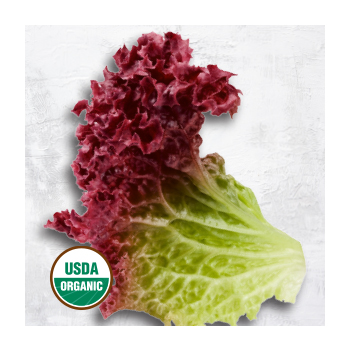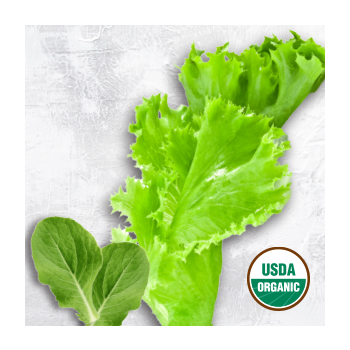


Sign-up for {N}power to get exclusive discounts, newsletters, members-only features, and more!
 Denver - Design District - Alameda and Broadway
Denver - Design District - Alameda and Broadway
368 S Broadway
Denver, CO 80209
United States
 Preferred Store:
Select a Store
Preferred Store:
Select a Store

It was August 2015; the leafy red romaine glistened under magenta light. This was the first time a vegetable was successfully grown in outer space and enjoyed by astronauts on the International Space Station.1 Fresh and drizzled with extra-virgin olive oil, this “home-grown” lettuce gave astronauts a dose of much needed vitamins and minerals while orbiting the Earth—and perhaps a taste of home. With a nutrient density profile that’s out of this world, lettuces are a great choice to incorporate into our diets, whether we’re on Earth-ground or space-bound. Just be sure to make them organic!

It’s no wonder astronauts chose to grow lettuce in space first. There’s just something about a salad that with every bite you can feel your body come alive with nourishment. Lettuce is rich in vitamins A, C, K, and folate, and minerals like iron.2 3 Organic lettuce boasts all these benefits and contains higher amounts of vitamin C.4
The National Council on Aging reports that more than a third of Americans get less than seven hours of the recommended eight to 10 hours of sleep and 30 percent show signs of insomnia. Poor sleep quality is associated with an increased risk of heart disease, diabetes, and cancer.5 Studies show that lettuce helps promote a longer sleep duration. The milky white liquid you sometimes see cutting lettuce is lactucarium, a compound with sedative effects responsible for lettuce’s sleep-inducing properties.6 The studies are recent but the practice of eating lettuce to promote sleep dates back to the Roman empire when people would have a salad before bed. Now that’s a sweet-dreams veggie!

Romaine, green or red leaf, butter, arugula, iceberg, you name it—there are many crisp and delicious varieties to bite into! Generally speaking, the darker colored lettuces contain higher concentrations of nutrients, particularly antioxidants. With such a nourishing food, you want to get the most out of every bite and that means choosing organic for any variety of leafy green that speaks to you. Conventionally grown lettuces are sprayed with a wide array of toxic insecticides, herbicides, and fungicides. These sprays include a number of neonicotinoids, such as dinotefuran and imidacloprid, that pose a serious threat to bees and other pollinators.7 A recent study investigating how lettuces uptake dinotefuran found that lettuce absorbed 20 percent of the toxic spray. When a pesticide is absorbed into the plant, this means you can’t wash it off!8 Additionally, residues of the insecticide can be found in subsequent crops grown in the same soil. Choosing organic lettuce ensures a healthier soil for generations to come, and a healthier you!

A new twist on Caesar salad! This plant-based wrap highlights summer’s freshest lettuce, tossed in a premade Caesar dressing topped with crunchy roasted garbanzo beans, all rolled up in a gluten-free wrap. Perfect for a light lunch or dinner, it’s on the table in 30 minutes or less.



Sign-up for {N}power to get exclusive discounts, newsletters, members-only features, and more!
